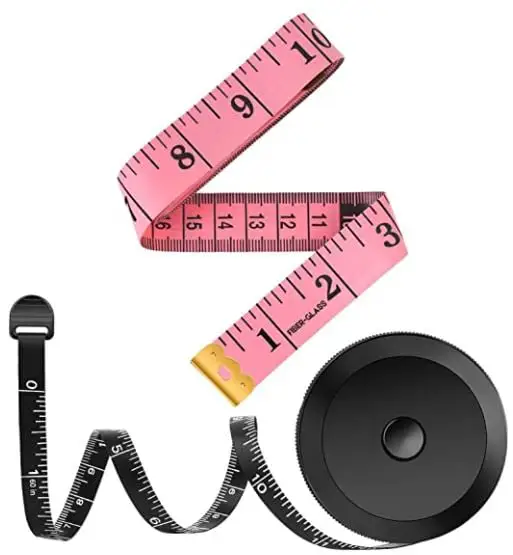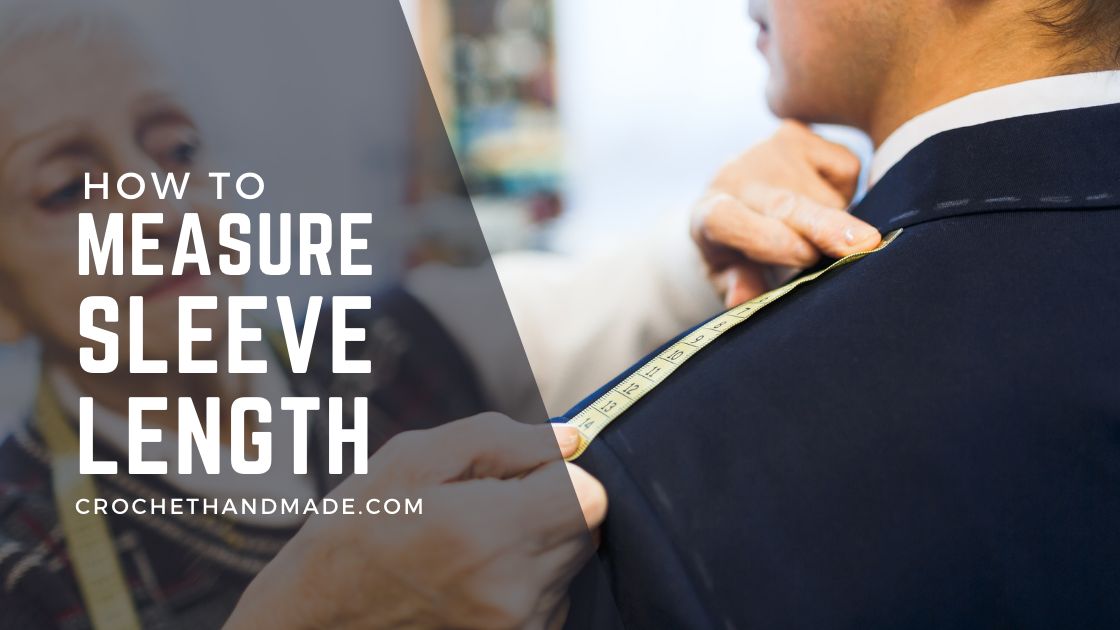Are you interested in buying a work shirt but unsure about your sleeve measurements? Measuring the sleeve length is essential to getting the best fit. We’ll share with you everything you need to know about measuring sleeve length.
With many body measurements to consider, something as simple as searching for the perfect well-fitting dress shirt may become a bit nerve-racking. If you want to make sure your shirt looks tailored and professional, the sleeve length is an essential measurement when trying on dress shirts.
If you feel a little overwhelmed and have no idea how to measure sleeve length, do not worry; taking measurements is not difficult at all. However, you need to follow a few simple guidelines to ensure you have the correct measurements. While you can take your own measurements, it is highly recommended to have someone assist you.
How to Measure Sleeve Length
- The first thing you’ll want to do is iron the shirt. You’ll need it to be as smooth as possible if you want to get the measures right. Place the shirt on a flat surface. Extend the sleeves but put them in a natural position.
- Do not fold them, nor forcefully put them in a position that would go against the way it’s seamed.
- You can then use a measuring tape from the beginning of the sleeve to the top. This should give you the first estimate of its sleeve length. Then, you should turn it around and measure it from the top of the sleeve to the neck.
- You’ll have two values: the first represents the length between the shirt’s neck and the shoulder seam. The second one represents the length between the shoulder seam and the wrist of the shirt.
- Add those two values together to get an accurate estimate of the overall size of the shirt.

Our Favorite Measuring Tape for Body Fabric
This measuring tape has accurate, large, and clear markings in inches and centimeters, easy and convenient to read.
Suitable for cloth tape measuring, body tape measuring, sewing tape measuring, measuring tape for the body, waist tape measuring, and tailor tape measuring.
Great measuring tape for the body, sewing, tailoring, weight loss, ordering clothes online, waist measurement, or measuring any curved surface.
The black tape measure is retractable. There is a retract button in the center, press the button when pulling the tape out or retracting the tape back into it, or there will be loud noise.

Features:
- Soft fashion pink tape
- Retractable black tape measure
Video Tutorial on How to Measure Sleeve Length
How do you measure sleeve length on a person?
Sleeve lengths are not always based on your arm length because shirt sleeves do not end at the same spot on your shoulder.
And each person has different shoulder widths. Also, the shape of the sleeve armhole affects the shoulder measurement, which affects the sleeve measurement.
Sleeve armhole shapes can be: set-in, drop shoulders, raglan, straight, and saddle.
To allow for these differences, clothing designers measure from the center back of your neck, over the top of your shoulder, and down to the point where your hand starts to widen at your wrist.
The actual measurement of your arm only is measured from the top of the shoulder to the bottom of your wrist and is often used for casual shirt sizing.
To measure the sleeve length on a person, measure from the center back of your neck, in other words, at your spine, to the end of your shoulder at the top of your arm.
Then, measure from your shoulder to just past your wrist bone to where you would like your shirt cuff to sit.
Always slightly bend the elbow when measuring to allow for extra ease.

Additional Tips on How to Measure Sleeve Length
- Men’s shirts are sized according to two numbers, usually separated by a slash. The first number is the neck measurement, and the second is the sleeve length. For example, the shirt might be marked 15/33, indicating a neck measurement of 15 and a sleeve measurement of 33.
- A common mistake many people make is standing with their arms perfectly straight – taking a stance in which they would typically not find their bodies at rest. Instead, a slightly bent arm, bent enough to pop a thumb or finger into a trouser pocket, should be just right.
- Shirt sleeves should be long enough that a half-inch sleeve shows when you wear a jacket over it.
- A shirt collar should not feel tight around your neck. If you can’t slip two-finger widths into the space between the collar and your throat, the shirt should go up a half size in the neck.
Best Measuring Tapes You Need To Measure Sleeve Length Easily
1. 2 Pack Tape Measure Measuring Tape Measure Sleeve Length
This 2 Pack Tape Measure Set is perfect for precise measurements when sewing, tailoring, or knitting fabrics. Made with a soft pink fashion tape measure and a retractable black tape measure, this set is perfect for any craft project.
The retractable black tape measure is especially handy, as it can be easily retracted and doesn’t get tangled like other tape measures.
To measure your sleeve length, start by measuring from the center back of your neck to your shoulder. Then, measure from the top of your shoulder down to your wrist bone.
Finally, measure from your wrist bone to where you want the sleeve to end. Once you have these three measurements, add them together, and that is your sleeve length!
If you are working with a pattern, it is always best to measure yourself first and then compare those measurements to the size chart on the back of the pattern envelope. That way, you can be sure to choose the right size for your body.
Happy sewing! Now that you know how to measure your sleeve
2. Smart Tape Measure Body with App – RENPHO Bluetooth Measuring Tapes
A body tape measure is a great way to track your progress as you work on weight loss or muscle gain. A traditional tape measure can be used to measure your chest, waist, hips, and other body parts, but it can be tricky to get an accurate measurement. A body tape measure that uses Bluetooth technology can make the process much easier.
To measure your sleeve length, start by measuring from the center of your back to your wrist. Then, measure from the center of your neck to your shoulder. Finally, measure from the base of your neck to the top of your shoulder. The difference between these three measurements is your sleeve length.
When you’re shopping for clothing, it’s essential to know your sleeve length. This measurement can help you find items that will fit your body type. It can also be helpful when you’re ordering custom-made clothing. With a little bit of effort, you can easily find the perfect shirt, dress, or jacket for your frame.
You can use a regular tape measure if you don’t have a body tape measure. Just be sure to take your measurements in inches or centimeters. This will help you to get an accurate measurement of your sleeve length.
Now that you know how to measure your sleeve length, it’s time to start shopping for clothes that fit your body type! You can find the perfect shirt, dress, or jacket for your frame with some knowledge.
How to Measure Sleeve Length FAQs
When knowing your sleeve length becomes helpful
When looking for dress shirts, you’ll probably come across numerical sizing that includes two numbers separated by a slash (for example, 13/32).
The first number is for the neck opening (your shirt collar size), and the second is the sleeve length. You’ll need to know the ideal sleeve length for your arms to choose the correct size.
This sizing method is especially true in menswear lines, but professional women’s shirts often include sleeve lengths in their dress shirt sizes.
Then knowing your sleeve length becomes helpful because you’ll have an easier time at the tailor and also because you’ll avoid buying clothes that are the wrong fit.
How should a sleeve fit?
For the ideal sleeve, the shoulder seam should rest at the edge of your shoulder, just where it begins to slope. Similarly, your shirt cuffs should end precisely at the break of your wrist, and a half-inch of the cuff should be visible under a suit jacket.
What sleeve length do I need?
To know which sleeve you need, you need to consider the following:
- Roundup; round up to the nearest half of your shirt sleeve length in a quarter-inch margin. Different retailers will advertise shirt sizes differently. Find the range or half size closest to your measurement, but always round up to ensure you have room to move around.
- Relax your body. When measuring, you must relax your neck, shoulders, and arms; if you measure while you’re stiff, the sleeve will end up being too short when you buy the shirt and move in it.
- Get an extra set of hands. It can be hard to line up the measuring tape with the back of your neck or along your arm; ask a friend to help you with the most accurate results.
- Measure a shirt that fits you well. If you already have a dress shirt that fits like a dream, from the shoulder seams to the end of the cuff, put it on and measure the sleeve length to see the exact measurements you prefer.
How do you measure underarm sleeve length?
Measure at the bottom of the armhole/side seam intersection, along the sleeve seam to the bottom edge of the sleeve/cuff.
What are the types of sleeve armholes?
Each shirt has a specific armhole sleeve type. Each one defines how the sleeve is attached to the shirt itself.
Set-in Sleeves
The main attribute of a set-in sleeve is that the seam is placed directly on the shoulder, going all the way down the arm. This type of seam is usually more commonly seen in business and professional shirts; with them, clothing tends to look straighter, giving it a professional look.
Raglan Sleeves
Raglan sleeves are the exact opposite of set-in sleeves. There isn’t any seam connecting the shoulder to the sleeve – it’s just one piece of fabric connected to the neck that becomes part of the sleeve itself. It goes all the way from the collar to the sleeve’s underarm.
Drop Shoulder Sleeves
Drop shoulder sleeves are a type of set-in sleeve. The difference is that the seam isn’t located on top of the shoulder but rather drops down on the arm.
Straight Sleeves
There isn’t much to talk about straight sleeves: as their names suggest, the design is made to fit most arms and shoulders and keep a straight shape while doing it. Straight sleeves are also a type of set-in sleeve.
Saddle Sleeves
This final sleeve type is often seen as the opposite to raglan sleeves. The sleeves are joined by a seam, which is curved underneath the arm. This design isn’t too efficient, but it offers fine decorative characteristics.



